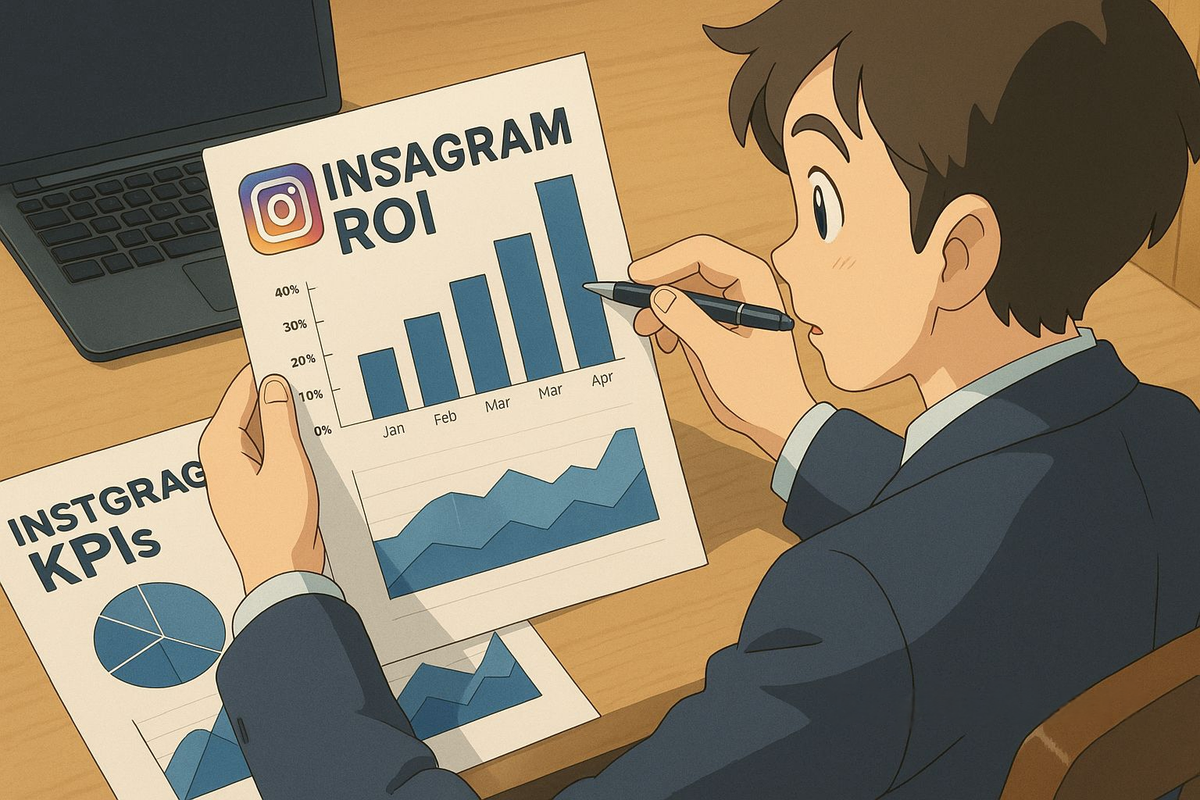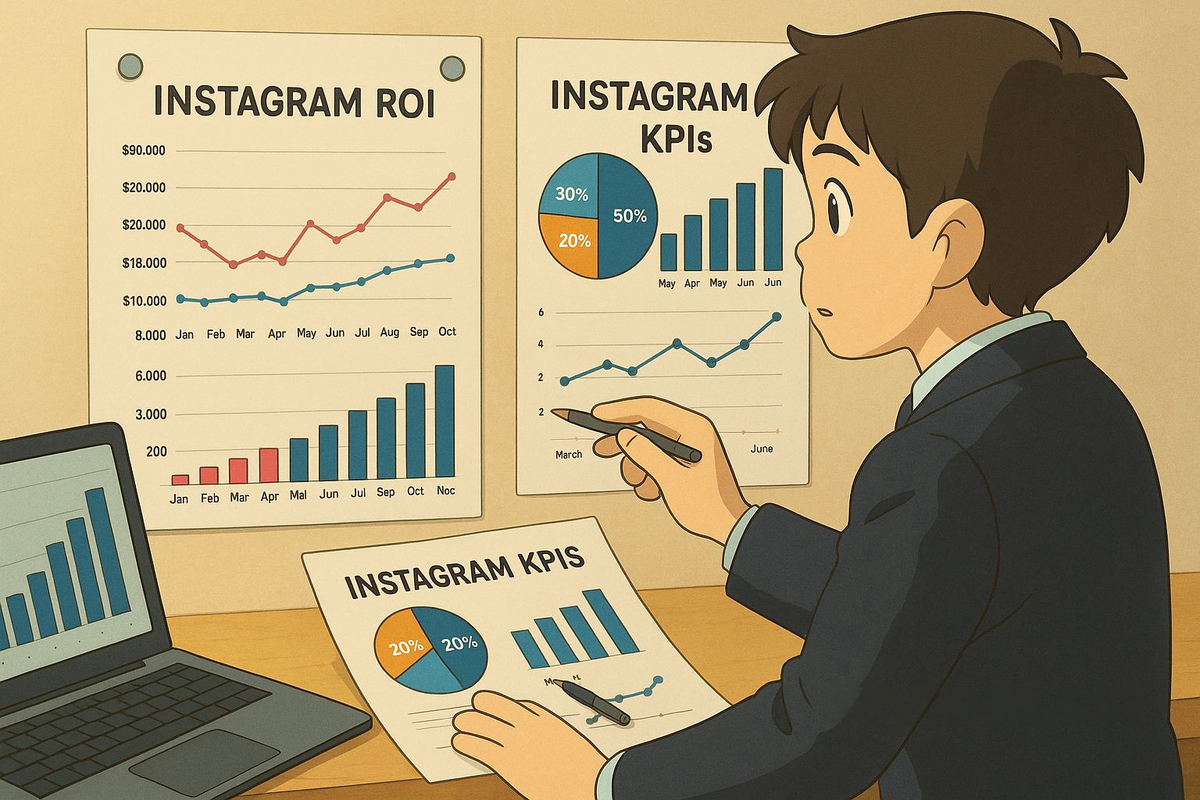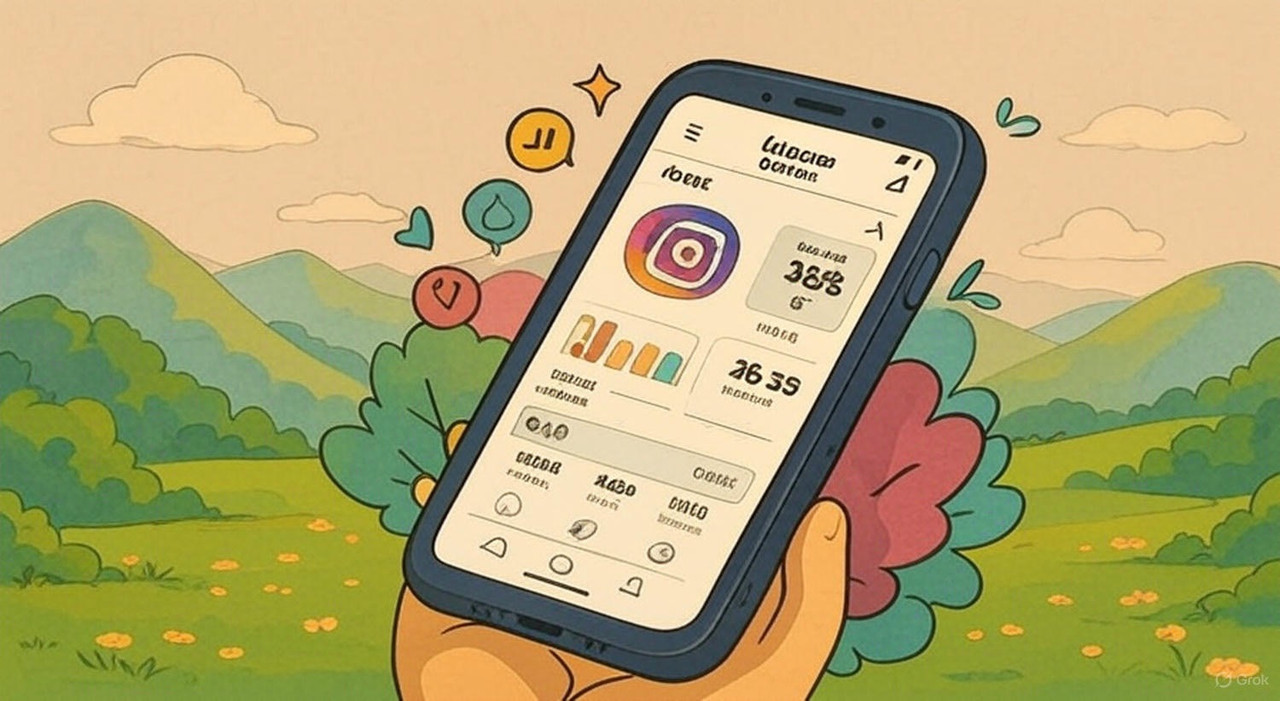Likes are nice. Comments are encouraging. Follower counts can be a source of pride. But for businesses and serious marketers, these "vanity metrics" only tell part of the story. To truly understand the effectiveness of your Instagram strategy, you need to look deeper and start measuring your actual Return on Investment (ROI). Calculating your Instagram ROI is crucial for justifying your marketing spend, optimizing your efforts, and making data-driven decisions.
Many struggle with how to measure Instagram success beyond these surface-level numbers. This article will guide you through identifying meaningful Key Performance Indicators (KPIs), tracking conversions, and ultimately understanding the tangible business value your Instagram presence is generating.

Why Vanity Metrics Aren't Enough
While high like counts and follower numbers can feel good, they don't inherently translate to business success. You could have thousands of followers who never convert into customers, or posts with many likes that don't drive any website traffic. Focusing solely on these can be misleading.
To get a real picture, you must connect your Instagram activities to concrete business objectives. This is where understanding your Instagram marketing ROI comes into play.
Defining Your Instagram Goals & KPIs
Before you can measure ROI, you need clear goals for your Instagram presence. What do you want Instagram to achieve for your business? Common goals include:
- Increasing brand awareness
- Generating leads
- Driving website traffic
- Increasing sales or conversions
- Building a community and customer loyalty
Once your goals are set, you can identify the relevant KPIs for Instagram that will help you track progress towards those goals. These go beyond simple likes and followers.
Key Takeaway: Your Instagram KPIs must align directly with your overarching business objectives.
Key Performance Indicators (KPIs) for Measuring Instagram ROI
Here are some crucial KPIs to track to get a better understanding of your Instagram ROI:
1. Reach and Impressions
While reach (unique accounts that saw your content) and impressions (total times your content was seen) are often considered awareness metrics, they are foundational. If people aren't seeing your content, they can't engage or convert.
- Track: Overall reach, post reach, Story reach.
- Why it matters for ROI: Indicates the potential size of your audience and the effectiveness of your content distribution.
2. Engagement Rate
This measures how actively involved your audience is with your content. It's often calculated as: (Total Engagements [Likes + Comments + Shares + Saves] / Total Followers or Reach) * 100.
- Track: Engagement rate per post, overall account engagement rate, types of engagement (saves often indicate high value).
- Why it matters for ROI: Higher engagement often correlates with stronger brand affinity and can indirectly lead to conversions. It also boosts visibility in the algorithm.
3. Website Click-Through Rate (CTR)
If a key goal is driving traffic, this is vital. Track clicks on the link in your bio, links in Stories, or swipe-up links (if applicable).
- Track: Clicks from bio link (use UTM parameters for better tracking in Google Analytics), Story link taps.
- Why it matters for ROI: Directly measures how effective Instagram is at sending potential customers to your website or landing pages where conversions happen.
4. Conversion Rate
This is where the rubber meets the road for many businesses. A conversion can be a sale, a lead form submission, an email signup, an app download, etc.
- Track: Use Instagram Shopping tags, UTM parameters on links to track specific campaigns in Google Analytics, or unique promo codes for Instagram-driven sales.
- Why it matters for ROI: Directly measures how many users take a desired action after interacting with your Instagram content. This is a core component to track Instagram conversions.
5. Leads Generated
If your goal is lead generation, track how many leads originate from Instagram.
- Track: Form submissions from Instagram-specific landing pages, DMs that convert to leads, sign-ups via Story links.
- Why it matters for ROI: Quantifies the number of potential customers your Instagram efforts are bringing in.
6. Cost Per Result (CPR) / Cost Per Acquisition (CPA)
If you're running Instagram Ads, these metrics are crucial. CPR measures the cost for any defined action (e.g., link click, engagement), while CPA specifically measures the cost to acquire a customer.
- Track: Via Instagram Ads Manager.
- Why it matters for ROI: Helps understand the efficiency of your ad spend in achieving desired outcomes.

Tools and Techniques for Tracking Instagram ROI
- Instagram Insights: Your first stop for basic analytics on reach, engagement, and audience demographics.
- Google Analytics (with UTM Parameters): Essential for tracking website traffic and conversions originating from Instagram. Create custom UTM parameters for your links to see exactly how much traffic and how many conversions each Instagram campaign or link drives.
- Facebook Pixel (Meta Pixel): If you run ads or want to track website actions from Instagram users, installing the Meta Pixel on your website is crucial.
- Third-Party Social Media Analytics Tools: Tools like Sprout Social, Hootsuite, Agorapulse, or Iconosquare offer more in-depth analytics, reporting, and competitor analysis.
- CRM and Sales Data: For direct sales or lead-to-customer tracking, integrate your CRM with your marketing efforts. Ask customers how they found you.
A simple social media ROI calculator formula can be: (Revenue from Instagram - Investment in Instagram) / Investment in Instagram * 100 = Instagram ROI %.
Interpreting the Data and Optimizing for Better ROI
Tracking metrics isn't enough; you need to analyze the data and make adjustments:
- Identify Top-Performing Content: What types of posts drive the most conversions or valuable engagement? Create more of that.
- A/B Test: Experiment with different calls-to-action, visuals, captions, and ad creatives to see what performs best.
- Refine Your Audience Targeting: Ensure your content and ads are reaching the right people.
- Optimize Your Landing Pages: If you're driving traffic to your website, ensure the landing pages are optimized for conversion.
Conclusion: Making Instagram Work Smarter for Your Business
Moving beyond vanity metrics to truly measure your Instagram ROI is a fundamental shift towards a more strategic and effective social media presence. By defining clear goals, tracking the right KPIs for Instagram, and consistently analyzing your performance, you can unlock the full business potential of the platform.
Understanding the real value of Instagram engagement and conversions will not only help you justify your efforts but also empower you to make smarter decisions that drive sustainable growth for your brand. If you're ready to dive deeper into your Instagram analytics and optimize for maximum ROI, Viral Horizon's expertise can guide you every step of the way.


